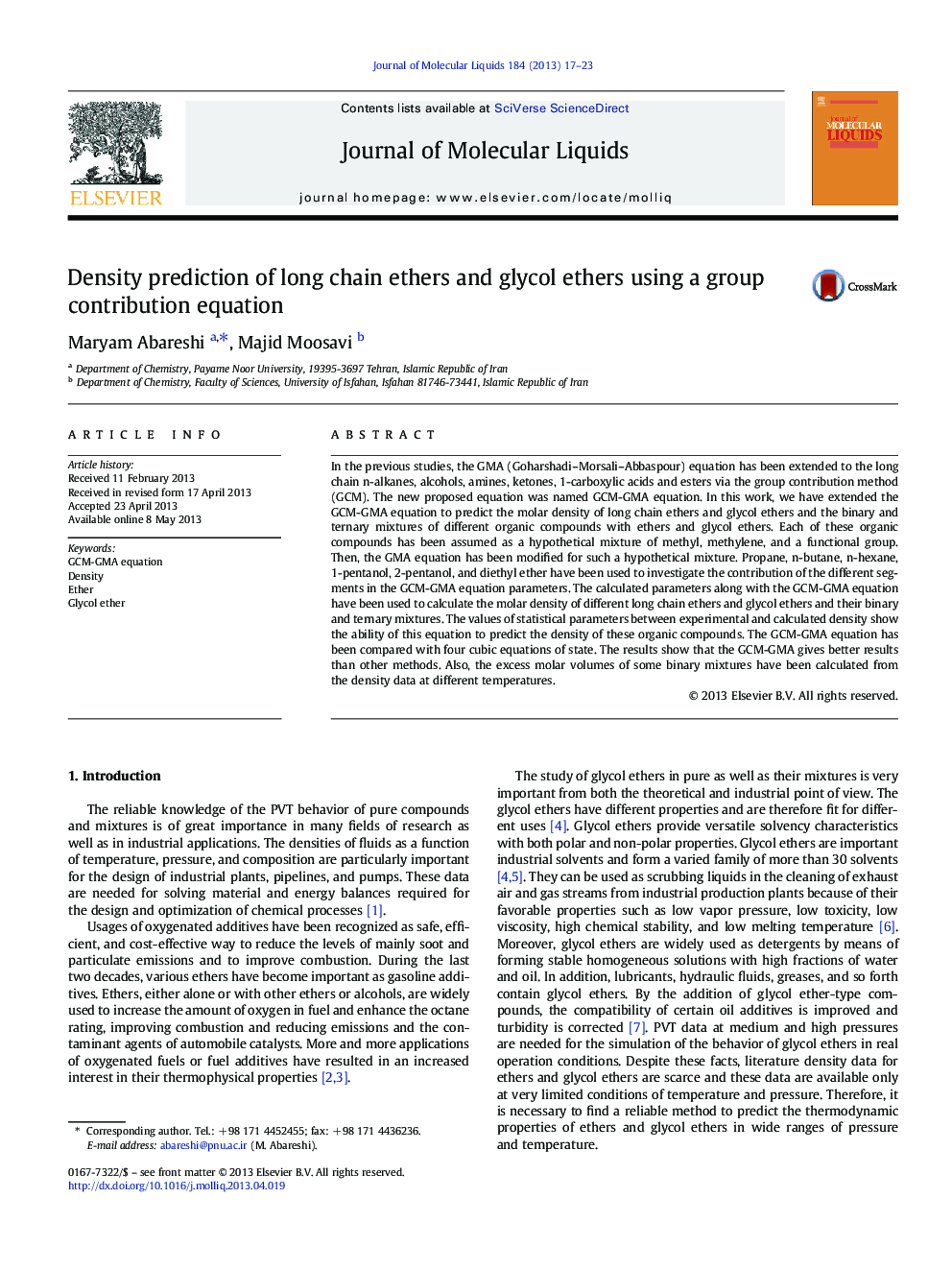| Article ID | Journal | Published Year | Pages | File Type |
|---|---|---|---|---|
| 5411947 | Journal of Molecular Liquids | 2013 | 7 Pages |
Abstract
In the previous studies, the GMA (Goharshadi-Morsali-Abbaspour) equation has been extended to the long chain n-alkanes, alcohols, amines, ketones, 1-carboxylic acids and esters via the group contribution method (GCM). The new proposed equation was named GCM-GMA equation. In this work, we have extended the GCM-GMA equation to predict the molar density of long chain ethers and glycol ethers and the binary and ternary mixtures of different organic compounds with ethers and glycol ethers. Each of these organic compounds has been assumed as a hypothetical mixture of methyl, methylene, and a functional group. Then, the GMA equation has been modified for such a hypothetical mixture. Propane, n-butane, n-hexane, 1-pentanol, 2-pentanol, and diethyl ether have been used to investigate the contribution of the different segments in the GCM-GMA equation parameters. The calculated parameters along with the GCM-GMA equation have been used to calculate the molar density of different long chain ethers and glycol ethers and their binary and ternary mixtures. The values of statistical parameters between experimental and calculated density show the ability of this equation to predict the density of these organic compounds. The GCM-GMA equation has been compared with four cubic equations of state. The results show that the GCM-GMA gives better results than other methods. Also, the excess molar volumes of some binary mixtures have been calculated from the density data at different temperatures.
Keywords
Related Topics
Physical Sciences and Engineering
Chemistry
Physical and Theoretical Chemistry
Authors
Maryam Abareshi, Majid Moosavi,
